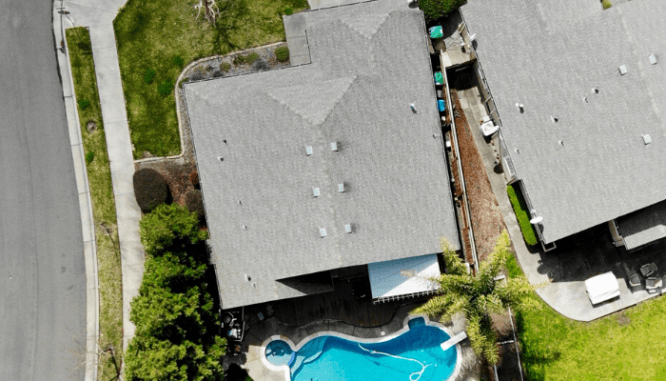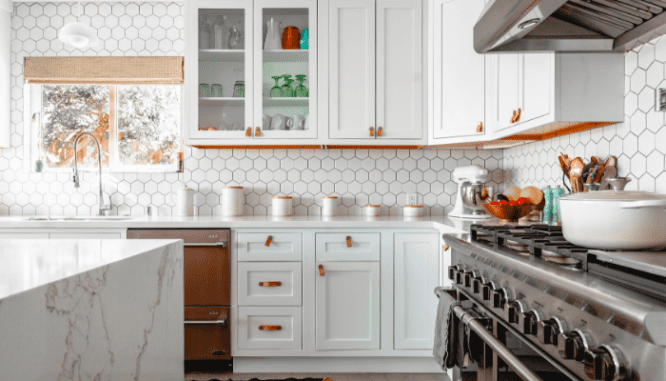How Does Home Insurance Work? Your A-to-Z Guide as a Homeowner
- Published on
- 4-5 min read
-
 Alesandra Dubin Contributing AuthorClose
Alesandra Dubin Contributing AuthorClose Alesandra Dubin Contributing Author
Alesandra Dubin Contributing AuthorAlesandra Dubin is a lifestyle journalist and content marketing writer based in Los Angeles. Her vertical specialties include real estate; travel; health and wellness; meetings and events; and parenting. Her work has appeared in Business Insider, Good Housekeeping, TODAY, E!, Parents, and countless other outlets. She holds a master's degree in journalism from NYU.
For many people, the whole concept of insurance can be daunting. When and why to get coverage, and how much your policy needs to cover — well, that’s a complex proposition across categories. But homeowners insurance can feel especially overwhelming.
In part, that’s because a homeowners policy covers so many different things: a structure as well as your possessions inside it, your belongings away from your home, and also your liability for accidents on your property or involving your pets.
Mind-boggling as it may feel, it’s critical to understand the fundamentals of homeowners insurance policies. If you have a mortgage loan, you likely need homeowners insurance to meet the requirements of your loan — so that you can rebuild if something happens.
And even if you aren’t obligated to have homeowners insurance and are considering declining coverage, you should have all the intel you need to inform that decision. (Spoiler: You probably should just get the coverage!)
Here’s a primer with expert tips to help you understand how home insurance works.

Do you have to get homeowners insurance?
If you have a mortgage loan, it is likely that homeowners insurance is a requirement — for at least the outstanding amount of your loan.
If it’s not required under the terms of a mortgage loan, homeowners insurance is likely optional, and a personal decision. But most experts (and laypeople) consider it a necessity both for protection and for peace of mind. If something happens to your home — or something happens on your property and you’re sued as a result — you might be wiped out financially if you’re not carrying a policy to offset those risks.
“When you have a mortgage, you have to have home insurance,” says Gregory Brown, a top-selling agent based in Fort Wayne, Indiana, who’s sold 459 single-family homes. “If you’re buying a home with cash, they don’t require it — but it would be pretty crazy not to have insurance.”
That’s because the reality is, “Stuff can go wrong that you can’t always predict.” Brown explains that his insurance helps him “sleep a lot better at night” and enjoy his kids’ pool parties at the family home. He says, “I’ve got teenagers now. Knowing that I’m covered if they do something I can’t prevent — it’s nice when you know that your life won’t be turned upside down if something happens that’s out of your control.”
What’s covered under homeowners insurance — and what isn’t?
In a typical policy, your possessions are covered — both inside the house or when you are carrying them elsewhere and something happens.
Also covered are structures on your property: your house, as well as any other structures, such as detached garages and sheds. As well, your policy will include some liability coverage for damage or injuries sustained at home — and even away from it, too.
So consider that if your dog bites someone on your property, or even elsewhere, your policy can help cover the associated medical and legal costs.
Events such as fire, explosions, hail, and water damage (but not water damage associated with floods) are all covered circumstances that would trigger a policy, as is theft.
Homeowner’s insurance policies will not include certain events such as earthquakes and floods, often associated with regional-specific concerns. Also excluded are mold, landslides, government action, and nuclear hazards. Wear and tear to a home are not included, either.
“If your roof is 30 years old and the shingles are deteriorated, they’re cracking and curling from age, you’re not going to be able to call your insurance company and say, ‘My roof is bad and I need a new roof,” Brown explains. “Now, if your roof has hail damage, or your roof is 10 years old and a tornado comes and takes half the shingles off, or a tree falls on your roof — that is going to be covered.”
What are the types of homeowners insurance policies?
A common type of policy is called an HO-2. This is a basic policy that covers a specific list of problems, including fire, theft, riots, smoke — and a dozen other named issues. But that’s it.
For more comprehensive coverage, there’s an HO-3 policy. HO-3 covers all risks — not just the specific named ones — except ones that the insurance company specifically excludes.
The most comprehensive policy is an HO-5, which covers both the home and other structures on the property from all problems that the insurance company hasn’t specifically excluded.
(For reference, HO-4 is a renter’s insurance policy, which covers tenants’ belongings, but not the property itself.)
Brown also believes that homeowners should consider buying an additional umbrella policy.
“An umbrella policy covers you for more than just what’s in your standard homeowners insurance and your car insurance,” he says. “We have a pool. We have a lot of kids come over for the pool.
“And if anybody were to have a catastrophic event in the pool, a lot of normal homeowners insurance coverages will only go up to like $250,000 or $300,000. If you’re in a situation where somebody gets paralyzed or dies, and you get into some nasty lawsuit, you could lose everything.”
For his own $2 million umbrella policy, Brown pays about $400 annually. “So it’s not that much money,” he says, given the level of coverage and peace of mind it brings. “Accidents can happen, and for the little bit of money that you spend, you’re protecting your largest investment of your life. I’m not a big guy on getting insurance for my TV, my blender, and my microwave — but I definitely am on my house.”

How does the insurance company insure your home?
The insurance review encompasses home attributes and features such as square footage, building costs, crime rates, proximity to a fire hydrant, and other factors.
When you consider how much coverage you’ll need, you’ll make a choice between replacement cost or actual cost value.
Replacement cost is the spendier choice; it doesn’t factor in depreciation for payouts. It means the insurance company would pay out to the homeowner an amount equivalent to replacing what’s been damaged, capped at an amount specified in the policy, and deduction is not taken for depreciation. This allows you to replace your stuff with new items at their current cost in the marketplace.
Actual cost value refers to the real cost of replacing the property, minus the costs of depreciation. So you would get a payout based on what your stuff was worth at the time it was damaged or lost. This policy costs less — and it covers less, too, in terms of payout.
An extended replacement cost policy raises the payout even higher, and is meant to take into account such factors as the possibility of higher building costs at the time new construction is needed.
How much possession and liability coverage should you have?
A typical policy covers belongings within the home, up to a value between 50% and 70% of the total home value. If you have high-value items, consider how much coverage you’d need to replace them individually.
You should inventory your possessions both to help determine how much coverage you need, and also to document your stuff should you need to file a claim. You can do this by creating a list of items and descriptions (including brand names, specs, and serial numbers).
You can do a video walkthrough of your home to show these belongings clearly in a clip for your files: It’s as simple as walking through your home and making a record of the contents. Narrate what you’re documenting, like: “Samsung 70-inch LED TV, purchased in 2014…” Open all the drawers, cabinets, and closets in your walkthrough to show and record everything.
Various apps also offer easy platforms for taking such inventory from your smartphone. Sortly and Memento Database are both highly rated for this purpose, and both available for iOS and Android.
Also consider your liability needs vis-a-vis the cost of defending yourself in the unfortunate event of a personal injury lawsuit. If a basic policy could include $100,000 to $300,000 in liability coverage, you might consider adding two or more times that amount to protect yourself in a meaningful way if you’re sued.

When should you make changes to your homeowners insurance policy?
It’s a good rule of thumb to review your policy annually, and talk to your agent every year about coverage amounts.
Under certain circumstances, you might want to increase your liability coverage — even temporarily. Situations might include times when you’re renovating your home, or perhaps are operating a home daycare center or other business.
As well, you should consider any changes you’ve made to the home since your last policy update.
“I tell people to make changes to their policy whenever they do any major project, like you finish your basement,” Brown says. “If your basement wasn’t finished when you bought the home, there was nothing down there to insure — so you don’t have that coverage,” unless you add it later.
Or let’s say you’ve just done a $40,000 kitchen remodel:
“If something happens to your home, you want to make sure that you’re going to have enough money in your insurance policy to replace what you now have.”
These changes don’t always have to mean shelling out lots more cash for insurance. “Sometimes you can just increase your deductible and keep your price the same and increase your coverage,” Brown explains. “So you go from a $500 to $1,000 deductible, but your insurance coverage goes from $250,000 to $325,000. The price of your insurance might be the same.”
All told, you may not technically have to have homeowners insurance in all cases. But experts agree it’s a good idea to protect yourself from a possible catastrophe. And if one never strikes, your policy buys you valuable — even priceless — peace of mind.
Header Image Source: (Alfons Morales/ Unsplash)
